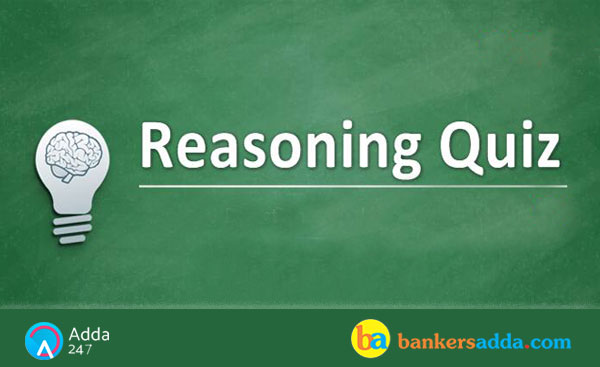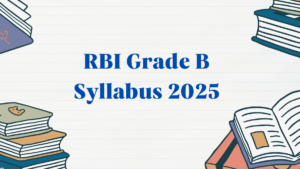Dear Aspirants,

Reasoning Questions for NIACL ASSISTANT 2018
Reasoning Ability is an onerous section. With the increasing complexity of questions, it becomes hard for one to give it the cold shoulder. The only way to make the grade in this particular section in the forthcoming exams like NIACL ASSISTANT is to practice continuously with all your heart and soul. And, to let you practice with the best of the latest pattern questions, here is the Adda247 Reasoning Quiz based on the study plan and the exact same pattern of questions that are being asked in the exams.
Directions (1-5): Study the information and answer the given questions:
Eight persons- P, Q, R, S, T, U, V and W are sitting around a circular table. Some of them are facing inside the center while some are facing outside the center. Q sits third to the left of W. R sits third to the right of U who is facing inside the center. P sits second to the left of R. Both V and S sits immediate left to each other. Only two persons sit between P and T. Q faces same direction as S but opposite to W. V sits second to the left of P. V and T facing same direction but opposite to R.
Q1. Who among the following sits immediate right of T?
R
S
W
Q
U
Solution:
(i)- By using given condition, R sits third to the right of U who is facing inside the center. P sits second to the left of R. Only two persons sit between P and T. There are two possible cases. In case-1: R is facing outside the center and in case-2: R is facing inside the center. There are also two possibilities in case-2.
(ii)- V and S sits immediate left to each other. V sits second to the left of P. By using this condition T’s position is fixed in case-2. T is immediate right of R. Q sits third to the left of W. Q faces same direction as S but opposite to W. V and T facing same direction but opposite to R. By using this condition case-2 will be eliminated. The final arrangement is-
Q2. How many persons sits between P and U when counted in clockwise direction with respect to U?
One
Three
Two
Four
No one
Solution:
(i)- By using given condition, R sits third to the right of U who is facing inside the center. P sits second to the left of R. Only two persons sit between P and T. There are two possible cases. In case-1: R is facing outside the center and in case-2: R is facing inside the center. There are also two possibilities in case-2.
(ii)- V and S sits immediate left to each other. V sits second to the left of P. By using this condition T’s position is fixed in case-2. T is immediate right of R. Q sits third to the left of W. Q faces same direction as S but opposite to W. V and T facing same direction but opposite to R. By using this condition case-2 will be eliminated. The final arrangement is-
Q3. Who among the following faces W?
P
R
S
U
V
Solution:
(i)- By using given condition, R sits third to the right of U who is facing inside the center. P sits second to the left of R. Only two persons sit between P and T. There are two possible cases. In case-1: R is facing outside the center and in case-2: R is facing inside the center. There are also two possibilities in case-2.
(ii)- V and S sits immediate left to each other. V sits second to the left of P. By using this condition T’s position is fixed in case-2. T is immediate right of R. Q sits third to the left of W. Q faces same direction as S but opposite to W. V and T facing same direction but opposite to R. By using this condition case-2 will be eliminated. The final arrangement is-
Q4. If R is related to P and S is related to W, then Q is related to whom among the following?
T
U
V
P
W
Solution:
(i)- By using given condition, R sits third to the right of U who is facing inside the center. P sits second to the left of R. Only two persons sit between P and T. There are two possible cases. In case-1: R is facing outside the center and in case-2: R is facing inside the center. There are also two possibilities in case-2.
(ii)- V and S sits immediate left to each other. V sits second to the left of P. By using this condition T’s position is fixed in case-2. T is immediate right of R. Q sits third to the left of W. Q faces same direction as S but opposite to W. V and T facing same direction but opposite to R. By using this condition case-2 will be eliminated. The final arrangement is-
Q5. Who among the following sit opposite to the one who sits 2nd left of V?
R
U
S
Q
None of these
Solution:
(i)- By using given condition, R sits third to the right of U who is facing inside the center. P sits second to the left of R. Only two persons sit between P and T. There are two possible cases. In case-1: R is facing outside the center and in case-2: R is facing inside the center. There are also two possibilities in case-2.
(ii)- V and S sits immediate left to each other. V sits second to the left of P. By using this condition T’s position is fixed in case-2. T is immediate right of R. Q sits third to the left of W. Q faces same direction as S but opposite to W. V and T facing same direction but opposite to R. By using this condition case-2 will be eliminated. The final arrangement is-
Directions (6-10): In these questions, relationship between different elements is shown in the statements. These statements are followed by two conclusions. Mark answer as (a) If only conclusion I follows. (b) If only conclusion II follows. (c) If either conclusion I or II follows. (d) If neither conclusion I nor II follows. (e) If both conclusions I and II follow.
If only conclusion I follows.
If only conclusion II follows.
If either conclusion I or II follows.
If neither conclusion I nor II follows.
If both conclusions I and II follow.
Solution:
I. S < V (True) II. S < U (False)
If only conclusion I follows.
If only conclusion II follows.
If either conclusion I or II follows.
If neither conclusion I nor II follows.
If both conclusions I and II follow.
Solution:
I. F < O (True) II. F < D (True)
If only conclusion I follows.
If only conclusion II follows.
If either conclusion I or II follows.
If neither conclusion I nor II follows.
If both conclusions I and II follow.
Solution:
I. A < K (False) II. A ≥ N (False)
If only conclusion I follows.
If only conclusion II follows.
If either conclusion I or II follows.
If neither conclusion I nor II follows.
If both conclusions I and II follow.
Solution:
I. E > J (False) II. S ≤ E (False)
If only conclusion I follows.
If only conclusion II follows.
If either conclusion I or II follows.
If neither conclusion I nor II follows.
If both conclusions I and II follow.
Solution:
I. P > M (False) II. N < M (True)
Directions (11-15): Study the following arrangement carefully and answer the questions given below.
Q11. Which of the following comes 2nd right of 12th element from right end of this series?
©
O
U
5
None of these
Q12. Four of the following five are alike in a certain way based on their position in the above arrangement and so form a group. Which is the one that does not belong to that group?
A5N
@97
X68
P32
$©V
Q13. How many such vowels are there in the above arrangement each of which is immediately preceded by a number but not immediately followed by a consonant?
None
One
Two
Three
More than three
Q14. How many such symbols are there in the above arrangement each of which is immediately followed and immediately preceded by a number? (a) (b) (c) (d) (e) S14. Ans.(d)
None
One
Two
Three
More than three
Q15. How many such numbers are there in the above arrangement each of which is immediately preceded by consonant and immediately followed by a vowel?
None
One
Two
Three
More than three
You may also like to read:





 GA Capsule for SBI Clerk Mains 2025, Dow...
GA Capsule for SBI Clerk Mains 2025, Dow...
 The Hindu Review October 2022: Download ...
The Hindu Review October 2022: Download ...
 RBI Grade B Syllabus 2025 and Exam Patte...
RBI Grade B Syllabus 2025 and Exam Patte...





